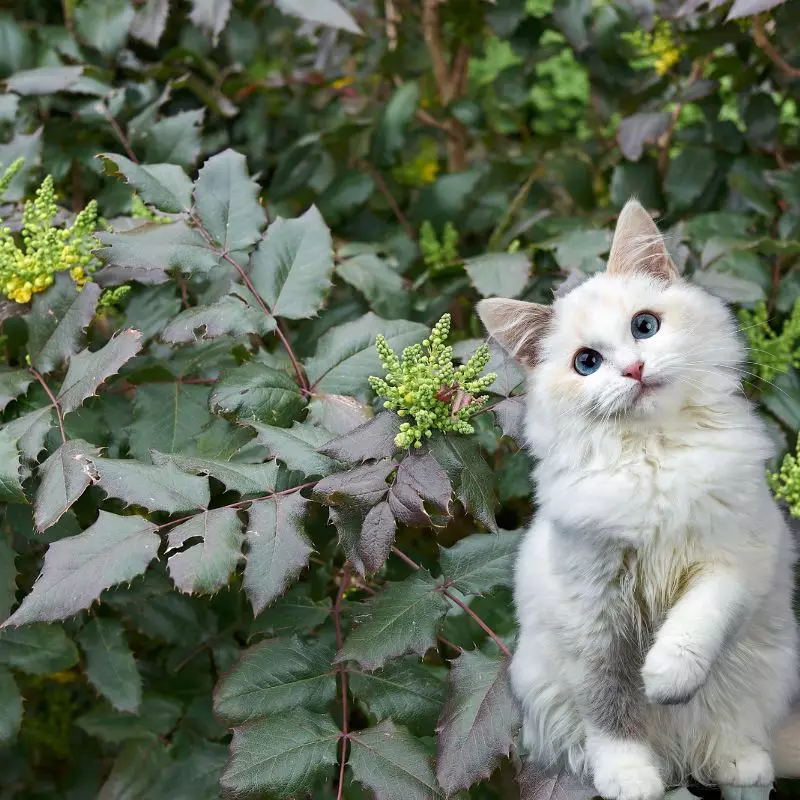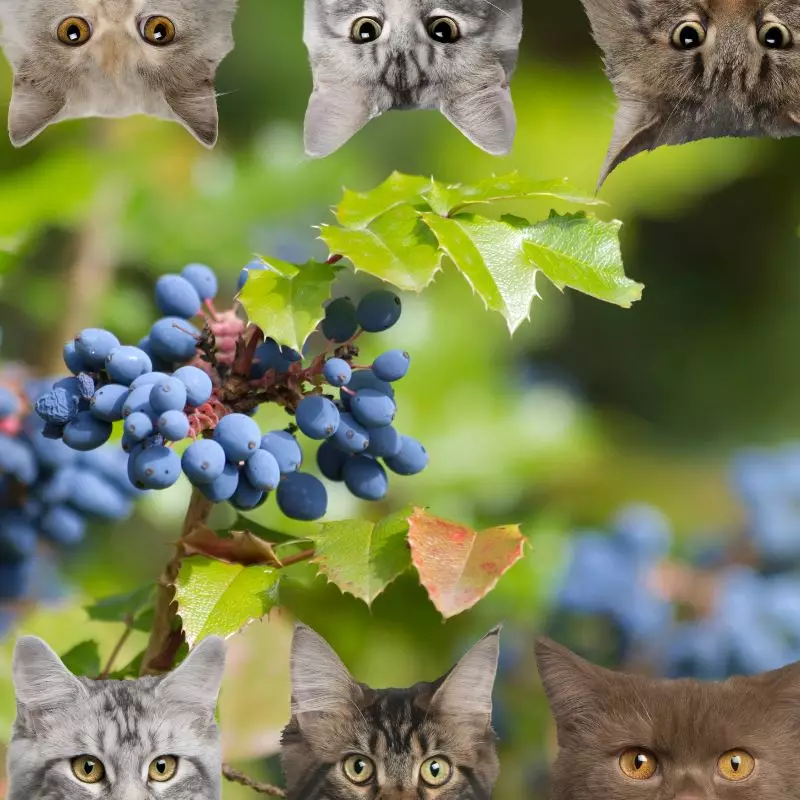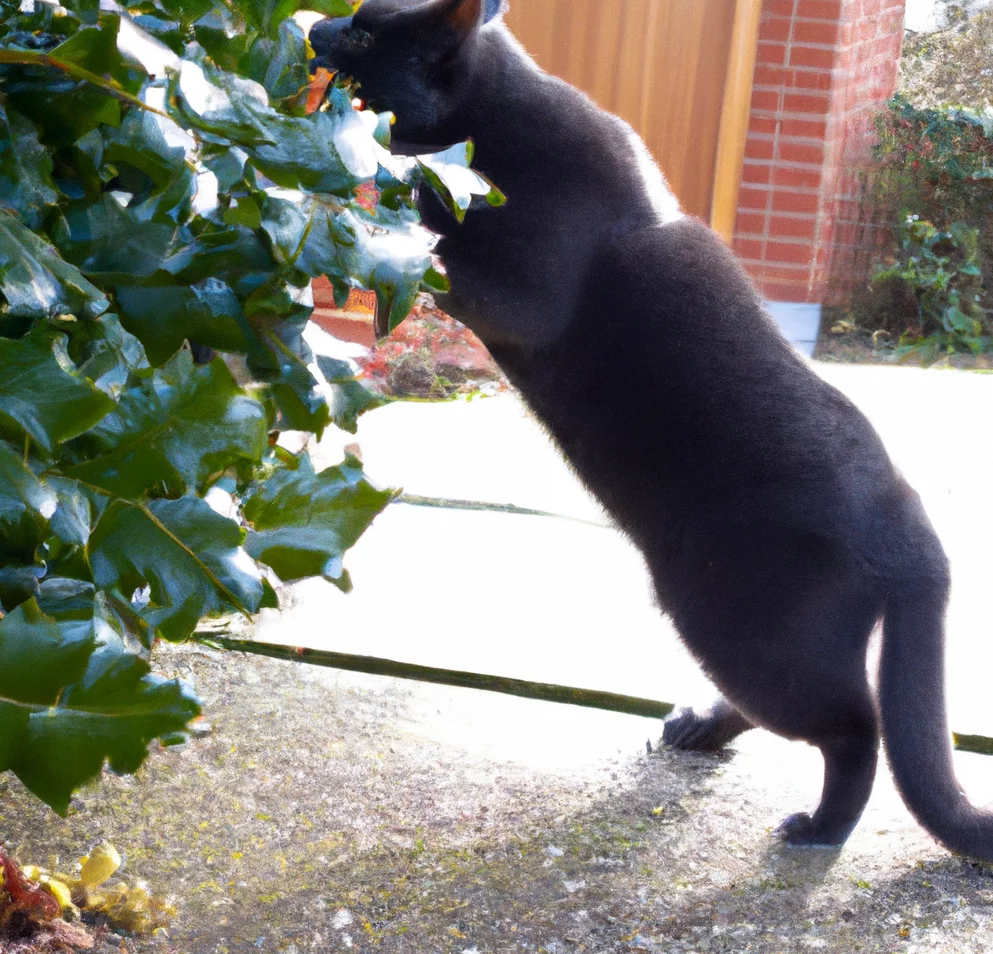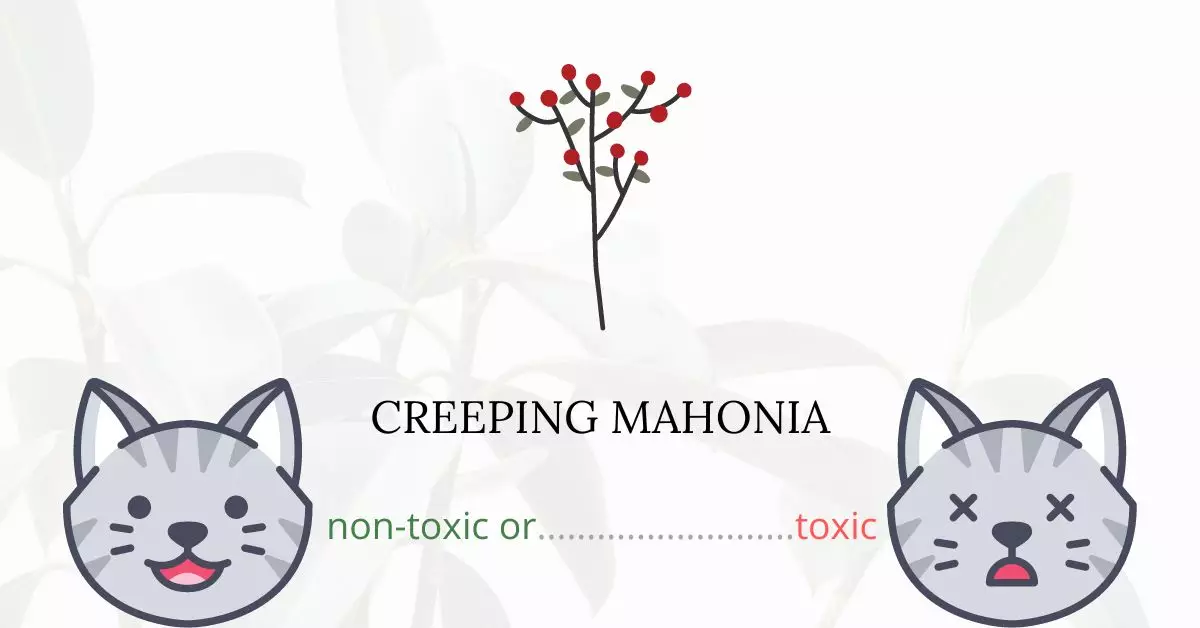Creeping Mahonia, also known as Oregon Grape, is not toxic for cats.
In our effort to provide accurate and reliable information on this topic, this article has been meticulously crafted in collaboration with a team of experienced DVMs (doctors of veterinary medicine). Their extensive knowledge and insights ensure we deliver the most up-to-date information regarding the potential risks various plants, including Creeping Mahonia, might pose to cats. Further substantiating our findings, we have cross-referenced with high-authority websites such as the ASPCA and PetMD.
Despite its name, Oregon Grape is not a true grape and, contrary to popular misconception, it is not harmful to our feline companions.
Can Cats Eat Creeping Mahonia?

Creeping mahonia is one of the common houseplants that are acceptable for your cat to munch on. Though it isn’t a favorite food, especially because of the leathery, spiny leaves, it’s still food when times are hard. Ensure your kitty doesn’t munch on this plant excessively. Cats are carnivores by nature. For felines, eating too much plant-based diet can cause stomach troubles and diarrhea.
What is Creeping Mahonia?

Creeping Mahonia (Mahonia aquifolium) has earned the nickname “Oregon Grape” because of its abundance in the Pacific Northwest of North America and the little blueberries it produces. It is a shrub with leathery, spiky leaves that resemble those of Common Holly (Ilex aquifolium), earning it the nickname Holly-leaved Barberry. Before they develop into berries, the plant produces little yellow flowers for fertilization.
It is a rhizome-forming groundcover that is evergreen. It has spines on 1″ to 2″ long bluish-green to grayish-green ovate leaves (like holly). The leafy stems are 5″ to 7″ long and have 3-7 leaflets on them. These leaves turn a lovely reddish-purple color in the fall. Single plants spread over time via underground rhizomes and above-ground stolons. A huge clump of plants, especially on hillsides, forms an effective mat for erosion control. Yellow flowers develop on the stalks in April. Later in the summer, the bloom produces fruit. The blue-tinged blackish fruit is commonly clustered in a grape-like cluster. The berries are particularly popular with birds. The berries are extremely sour, although they are edible and can be used in jellies.
This plant may grow in a broad variety of environments. It prefers warm weather and full sun. This is an excellent choice for gardeners that appreciate native species. It’s also an ideal choice for wooded areas because native whitetail deer don’t eat the foliage.
Keeping Cats Away From Creeping Mahonia

It’s easier than you might think to keep cats out of your garden. Even true animal lovers will have their patience tested when the neighborhood cats decide to use our well-kept flowerbeds as a litter dish or play area. Change your tactics on a frequent basis. A new cat in the area might not be as responsive to your normal approaches, so switching things up on a regular basis will help you get more results.
Before you begin planting, place physical barriers such as chicken wire on top of the soil or mulch across the planting bed. Chicken wire and bristly material are both disliked by cats. You can cut holes large enough for your plants in the chicken wire with wire cutters.
Plants to Avoid For Your Cats
If you are a cat owner and unsure if the plants growing in your yard are harmful to your cats, check out this list of toxic plants for cats. You can also check our list of non-toxic plants for cats.





